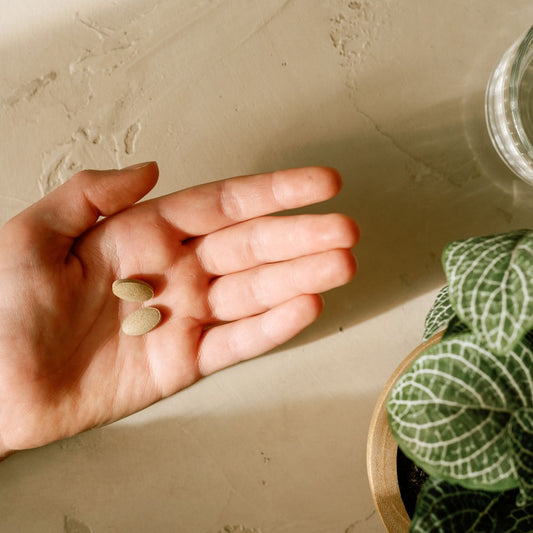Bhramari Pranayama

Bhramari Pranayama, also known as Humming Bee Breath, is a calming breathing practice that soothes the nervous system and helps to connect us with our truest inner nature.
Bhramari is the Sanskrit word for “bee,” and this pranayama is so named because of the humming sound produced at the back of the throat during the practice—like the gentle humming of a bee.
Benefits
- Calms and quiets the mind
- Releases mental tension
- Stimulates the pineal and pituitary glands
- Soothes the nerves
- Relieves stress and anxiousness
- Dissipates anger
- Supports the health of the throat
- Strengthens and supports the voice
- Promotes physical and emotional well-being
- Encourages sound sleep
Contraindications
Bhramari should not be practiced by pregnant or menstruating women. It is also contraindicated for individuals with extremely high blood pressure, epilepsy, chest pain, or an active ear infection. Bhramari should not be practiced in a supine position (lying down).
When to Practice
Bhramari (as with most pranayamas) is best practiced on an empty stomach. While it can be practiced at any time of day, bhramari is particularly potent in the early morning and late at night—when there are fewer distracting noises and our inner perception is most acute.
How to Practice
- Choose a comfortable sitting position. If you are able, it is best to sit cross-legged on the floor with a cushion or blanket to comfortably elevate the hips. Alternatively, you may choose to sit toward the front of a chair, with your feet flat on the floor. Allow the spine to lengthen so that the back, neck, and head are erect.
- Gently close the lips, keeping the teeth slightly apart, and bring the tip of your tongue to the space behind the upper front teeth. Maintain this position of the mouth throughout the practice, frequently checking to ensure that the jaw remains relaxed.
- Then, close each ear with the thumbs, place the index fingers at the midpoint of the forehead—just above the eyebrows—and reach the middle, ring, and pinky fingers across the eyes so that the tips of these fingers press very gently against the bridge of the nose.
- To begin, take a long, deep breath in through the nostrils, bringing the breath all the way into the belly. Drop the chin to the chest and begin to exhale slowly, making a steady, low-pitched 'hmmm' sound at the back of the throat—like the humming of a bee.
- Focus on making the sound soft, smooth, and steady. The positioning of the tongue allows the vibration to better resonate throughout the head, affecting the tissues of the brain. Keep the body completely still and bring your awareness to the center of the head—to ajna chakra—letting the sound fill the head and spread to the body. Merge with the sound and allow the vibration to permeate your entire being.
- At the end of the exhalation, slowly straighten your neck as you inhale again through the nostrils to repeat the process. Begin with seven repetitions. You may either continue with seven repetitions, or you may add one repetition per week, slowly building up to a total of seventeen repetitions.
- After the final exhalation, allow your breath to return to normal and observe any changes that have occurred. How do you feel physically, mentally, emotionally, and spiritually? What energetic shifts do you notice as a result of this practice? Where do you notice sensation in your body and how is it different from when you started?
- When you are ready, gently open your eyes, continuing to direct some of your awareness within. If it is morning, slowly stand and offer your full attention to the rest of your day. If it is evening, notice the vibrational calm that this practice has initiated in your body and try to maintain it as you prepare to retire for the night.
The above instructions are meant to provide a safe and general introduction to the practice of bhramari. Advanced practitioners sometimes add variations such as breath retention (khumbaka), muscular locks (bandhas), and may also hum on the inhalation—as in ujjayi pranayama. These additional techniques are best learned in person from a qualified teacher.
More for You
Bhastrika Pranayama
Learn about Bhastrika Pranayama (Bellows Breath), a breathing practice that stokes the inner fire of the mind and body, supporting proper digestion on all levels.
Kapalabhati Pranayama
Kapalabhati Pranayama, also known as Skull Shining Breath, is an energizing breathing practice that clears the lungs, the nasal passages, and the mind. In Sanskrit, Kapal means "cranium" or "forehead" and bhati means "light," ‘"perception," and "knowledge." Kapalabhati therefore brings lightness and clarity to the frontal region of the brain.
References
1 Saraswati, Swami Satyananda. Asana Pranayama Mudra Bandha. 2nd ed. Bihar, India: Bihar Yoga Bharati, 1996. Print. 389-391.
2 Lad, Vasant. Textbook of Ayurveda Vol III: General Principles of Management and Treatment. Albuquerque: The Ayurvedic Press, 2012. Print. 320-321.











